Enhancing Dementia Nursing Homes in South Korea: Lessons from German Building Standards
Abstract
1. Introduction
1.1. Background and Objectives
1.2. Research Methods
2. Background Status
2.1. Dementia and the Concept of Dementia-Friendly Built Space
2.1.1. Symptoms of Dementia
2.1.2. Dementia Nursing Homes as Dementia-Friendly Built Spaces
2.2. Dementia Nursing Homes in South Korea
2.3. Dementia Nursing Homes in Germany
3. Current Legislation on Dementia Nursing Homes in South Korea and Germany
3.1. Relevant Laws in South Korea
3.1.1. Superior Law: Welfare of Senior Citizens Act
3.1.2. Inferior Law: The Enforcement Regulations of the Welfare of Senior Citizens Act
3.2. Relevant Laws in Germany
3.2.1. Superior Law: Nursing Homes Act and State Laws
3.2.2. Inferior Law: Regulation on Minimum Standards for Nursing Homes and State Laws
4. A Comparison of Building Standards for Dementia Nursing Homes in South Korea and Germany
4.1. Regulations Regarding Basic Requirements for Dementia Nursing Homes
4.1.1. South Korea
4.1.2. Germany
4.1.3. Summary
4.2. Regulations Regarding the Facility Size of Dementia Nursing Homes
4.2.1. South Korea
4.2.2. Germany
4.2.3. Summary
4.3. Necessary Rooms in Dementia Nursing Homes and Detailed Regulations for Necessary Rooms
4.3.1. Configuration of Necessary Rooms within the Residential Unit
- 1.
- South Korea
- 2.
- Germany
4.3.2. Detailed Regulations for Necessary Rooms
- 1.
- Individual spaces
- a.
- Bedrooms and special bedroomsIn South Korea, detailed regulations focus on various types of bedrooms, including single, multi-person, and couple-shared occupancy types. These regulations primarily emphasize the autonomy design criterion, focusing on aspects such as bed safety, window size, health and safety equipment, anti-slip flooring, wheelchair access, and daylight. There is only a brief mention of personal storage facilities to enhance the sense of familiarity and privacy (Table 17I). Within the same criterion of autonomy, Germany’s building standards pertain to size, accessibility, door control, dimensions, external views, shading, lighting, etc., in bedrooms (Table 17II). Furthermore, they promote familiarity and personal privacy within the criterion of social interaction. This is achieved by arranging diverse furniture, providing adequate personal storage facilities, and ensuring space adaptability, such as allowing the use of a single room as a double room in the case of spousal admission. Both South Korean and German dementia nursing homes require a specific number of special bedrooms to temporarily separate residents in multi-person rooms.
- 2.
- Communal space
- a.
- Common living roomIn South Korea, regulations primarily focus on entry control for dementia units and the provision of space usage programs for program rooms in general units, aiming to support the autonomy of seniors with dementia (Table 18I), albeit with relatively limited requirements. On the other hand, German common living rooms have numerous and detailed requirements within the autonomy criterion, such as size, accessibility, space usage program, treatment integration, bed participation, shading, and reading lights (Table 18II). Furthermore, Germany has specifications on privacy and living space to enhance familiarity and a sense of belonging within the social interaction criterion. Additionally, it provides orientational cues and logical room syntax, such as location, thereby supporting autonomy and legibility criteria.
- b.
- Kitchens, dining rooms, and outdoor spaceIn Korea, kitchen–dining rooms are considered necessary, but kitchens are closed off to patients with dementia, and specific regulations regarding dining rooms are lacking. Between 2016 and 2018, some revisions mandated the installation of a simple kitchenette and dining area within dementia units. However, as of 2019, this requirement is no longer enforced, leaving elderly individuals with dementia in both dementia and general units unable to physically or sensorily engage in kitchen activities.In contrast, in Germany, kitchen and dining rooms are designated as open spaces accessible to patients with dementia and with wheelchair, and there are regulations regarding their size, numbers, storage, and locations. Consequently, these rooms support residents’ independence and enhance the readability of the dining space, aligning with the autonomy and legibility criteria. Moreover, outdoor spaces in Germany are regulated in terms of size, accessibility, location, protection, and shading to address the autonomy, legibility, and sensory stimulation needs of dementia patients.
- 3.
- Therapy and hygiene spaces
- a.
- Physical occupational therapy room and ensuite bathroomIn South Korea, there are no regulations related to physical therapy rooms and ensuite bedrooms in South Korea (Table 19I), with the latter lacking specific mandates for necessary rooms. German regulations address the autonomy criterion in the physical occupational therapy room by specifying numbers, sink usage, and shading. Furthermore, they provide various detailed regulations for ensuite bathroom/toilets, including specific guidelines related to autonomy, familiarity, and legibility criteria (Table 19II), such as numbers, accessibility, entrance space, entrance, door control, sanitary equipment, barrier-free, and home-like configuration.
- b.
- Common toilets and bathroomsSouth Korean regulations for common toilets and bathrooms include features such as anti-slip floors, wheelchair access, night lights, safety handles, bath tubs, and hot water, aiming to enhance the autonomy of patients with dementia. In contrast, German regulations include more detailed provisions such as numbers, door controls, visitor toilets, and mechanical baths, focusing on autonomy and personal privacy within the criterion of social interaction
- 4.
- Functional auxiliary, household management, and staff duty spaces
4.3.3. Summary
5. Conclusions
6. Discussion
Funding
Data Availability Statement
Conflicts of Interest
References
- Ebert, T.; Eßig, N.; Hauser, G. Green Building Certification Systems; Institut für Internationale Architekturdokumentation: München, Germany, 2011. [Google Scholar]
- National Institute of Dementia Center. 2016 Nationwide Survey on the Dementia Epidemiology of Korea (NIDR-1603-0015); Ministry of Health and Welfare: Seoul, Republic of Korea, 2016; p. 19. Available online: https://www.nid.or.kr/info/dataroom_view.aspx?bid=182 (accessed on 2 February 2024).
- Department of Economic and Social Affairs, Population Division. World Population Ageing 2017 (ST/ESA/SER.A/408); United Nations: New York, NY, USA, 2017. Available online: https://www.un.org/development/desa/pd/sites/www.un.org.development.desa.pd/files/files/documents/2020/May/un_2017_worldpopulationageing_report.pdf (accessed on 2 February 2024).
- World Health Organization. Global Action Plan on the Public Health Response to Dementia 2017–2025; World Health Organization: Geneva, Switzerland, 2017. Available online: https://www.who.int/publications/i/item/global-action-plan-on-the-public-health-response-to-dementia-2017---2025 (accessed on 2 February 2024).
- Alzheimer’s Disease International. Numbers of People with Dementia Worldwide: An Update to the Estimates in the World Alzheimer Report 2015. 2020. Available online: https://www.alzint.org/resource/numbers-of-people-with-dementia-worldwide/ (accessed on 2 February 2024).
- Zeisel, J.; Bennett, K.; Fleming, R. World Alzheimer Report 2020: Design, Dignity, Dementia: Dementia-Related Design and the Built Environment; Alzheimer‘s Disease International: London, UK, 2020; Available online: https://www.alzint.org/u/WorldAlzheimerReport2020Vol1.pdf (accessed on 2 February 2024).
- OECD. Health at a Glance 2021: OECD Indicators; OECD Publishing: Paris, France, 2021. [Google Scholar] [CrossRef]
- Department of Economic and Social Affairs. World Social Report 2023: Leaving No One Behind in an Ageing World; United Nations: New York, NY, USA, 2023. Available online: https://www.un.org/development/desa/dspd/wp-content/uploads/sites/22/2023/01/2023-wsr-tablecontents.pdf (accessed on 2 February 2024).
- Statistics Korea. Statistics on the Aged. 2017. Available online: https://kostat.go.kr/board.es?mid=a10301060500&bid=10820&act=view&list_no=363362 (accessed on 2 February 2024).
- Statistics Korea. Statistics on the Aged. 2018. Available online: https://kostat.go.kr/board.es?mid=a10301060500&bid=10820&act=view&list_no=370779 (accessed on 2 February 2024).
- Statistics Korea. Statistics on the Aged. 2019. Available online: https://kostat.go.kr/board.es?mid=a10301060500&bid=10820&act=view&list_no=377701 (accessed on 2 February 2024).
- Statistics Korea. Statistics on the Aged. 2020. Available online: https://kostat.go.kr/board.es?mid=a10301060500&bid=10820&act=view&list_no=385322 (accessed on 2 February 2024).
- National Institute of Dementia Center. Annual Report 2017; Ministry of Health and Welfare: Seoul, Republic of Korea, 2018. Available online: https://www.nid.or.kr/notification/notice_view.aspx?board_seq=1337 (accessed on 2 February 2024).
- National Institute of Dementia Center. Annual Report 2018; Ministry of Health and Welfare: Seoul, Republic of Korea, 2018. Available online: https://www.nid.or.kr/info/dataroom_view.aspx?bid=183 (accessed on 2 February 2024).
- National Institute of Dementia Center. Korea Dementia Observatory 2020 (NIDR-2002-0031); Ministry of Health and Welfare: Seoul, Republic of Korea, 2020. Available online: https://www.nid.or.kr/info/dataroom_view.aspx?bid=221 (accessed on 2 February 2024).
- Kuliga, S.; Berwig, M.; Roes, M. Wayfinding in people with Alzheimer’s disease: Perspective taking and architectural cognition—A vision paper on future dementia care research opportunities. Sustainability 2021, 13, 1084. [Google Scholar]
- Marquardt, G. MATI: Mensch-Architektur-Technik-Interaktion für Demografische Nachhaltigheit; Fraunhofer IRB Verlag: Stuttgart, Germany, 2015. [Google Scholar]
- United Nations. UN Population Division Data Portal. Available online: https://population.un.org/dataportal/home?df=9b8e3b44-ac1a-4677-9dc4-51ed06e03943https:%2F%2Fpopulation.un.org%2Fdataportal%2Fhome%3Fdf%3D60c689d5-2de8-4029-8649-b41708b74958 (accessed on 2 February 2024).
- Statistisches Bundesamt (Destatis). Bevölkerung in Deutschland. Available online: https://service.destatis.de/bevoelkerungspyramide/index.html#!y=1951&a=20,65&v=2&g (accessed on 2 February 2024).
- Kwon, S.J. A proposal for the improvement of facility regulation in the Act for Welfare of the Elderly. J. Korean Inst. Healthc. Archit. 2000, 6, 130–136. Available online: https://www.riss.kr/link?id=A3011451 (accessed on 2 February 2024).
- Lee, S.O.; Jeon, C.H. Residential environment of nursing homes: Busan suburbs (Busan, Gimhae, Yangsan)—A case study. J. Reg. Assoc. Archit. Inst. Korea 2000, 2, 27–34. Available online: https://www.earticle.net/Article/A33747 (accessed on 2 February 2024).
- Kim, K.M.; Jung, T.W.; Kim, H.H. A study on the design methods of the dementia facilities. J. Korean Inst. Healthc. Archit. 2000, 6, 97–106. Available online: https://www.riss.kr/link?id=A3011435 (accessed on 2 February 2024).
- Korea Health Industry Development Institute. Development of the Guidelines for the Design of the Long-Term Care Facilities in Korea. 2003. Available online: http://lib.nhis.or.kr/search/detail/CATNHZ000000009973 (accessed on 2 February 2024).
- Korea Health Industry Development Institute. International Comparison of Operating Standards and operating Status Of Nursing Facilities for the Elderly. 2007. Available online: https://www.khidi.or.kr/board/view?pageNum=50&rowCnt=10&no1=288&linkId=100434&menuId=MENU00085&maxIndex=00001005649998&minIndex=00001004329998&schType=0&schText=&schStartDate=&schEndDate=&boardStyle=&categoryId=&continent=&country= (accessed on 2 February 2024).
- Chin, Y.R.; Lee, H.Y. Comparing standards and guidelines of long-term care facilities based on physical environment and manpower in Korea, Japan, USA, and Australia. Health Policy Manag. 2012, 22, 403–426. [Google Scholar] [CrossRef][Green Version]
- Statista. Deutschland: Anteil der Bevölkerung ab 65 Jahre an der Gesamtbevölkerung von 1950 bis 2049. Available online: https://de.statista.com/statistik/daten/studie/14135/umfrage/deutschland-anteil-senioren-an-der-bevoelkerung/ (accessed on 2 February 2024).
- National Geography Information Institute (NGII). The National Atlas of Korea III 2021, Proportion of Expenditure on Social Welfare to GDP by Countries 2019. Available online: http://nationalatlas.ngii.go.kr/us/index.php (accessed on 2 February 2024).
- Statista. Age Distribution of Inhabitants of G7 Countries in 2022, by Country. Available online: https://www.statista.com/statistics/1372598/g7-country-age-distribution/ (accessed on 2 February 2024).
- Statista. Länder mit den Meisten Demenzfällen Weltweit im Jahr 2019. Available online: https://de.statista.com/statistik/daten/studie/1330371/umfrage/laender-mit-den-meisten-faellen-von-demenz-weltweit/ (accessed on 2 February 2024).
- Statista. Länder mit den Meisten Prognostizieren Demenzfällen Weltweit im Jahr 2050. Available online: https://de.statista.com/statistik/daten/studie/1330423/umfrage/laender-mit-den-meisten-prognostizierten-faellen-von-demenz-weltweit/ (accessed on 2 February 2024).
- OECD. Elderly Population (Indicator). Available online: https://www.oecd-ilibrary.org/social-issues-migration-health/elderly-population/indicator/english_8d805ea1-en (accessed on 2 February 2024).
- Choi, H.W. An international comparative study on the installation and operation standards of nursing homes for the elderly with dementia. J. Korean Hous. Assoc. 2017, 29, 175. Available online: http://www.dbpia.co.kr/journal/articleDetail?nodeId=NODE07159072. (accessed on 2 February 2024).
- Seong, S.J.; Kim, B.N.; Kim, K.W. Comparative Analysis on the Policy Approaches in the National Dementia Plans of G7 Countries and Korea and Their Implementation. J. Korean Med. Sci. 2023, 38, 1–13. [Google Scholar] [CrossRef]
- Ministry of Health and Welfare, South Korea. Welfare of Senior Citizens Act. Available online: https://elaw.klri.re.kr/eng_mobile/viewer.do?hseq=59915&type=sogan&key=10 (accessed on 2 February 2024).
- Ministry of Health and Welfare, South Korea. The Enforcement Regulations of Welfare of Senior Citizens Act. Available online: https://www.lawnb.com/Info/ContentView?sid=L000006940 (accessed on 2 February 2024).
- Bundesministerium der Justiz und für Verbraucherschutz. Heimgesetz. Available online: https://www.gesetze-im-internet.de/heimg/ (accessed on 2 February 2024).
- Bundesministerium der Justiz und für Verbraucherschutz. HeimMindBauV: Verordnung Über Bauliche Mindestanforderungen Für Altenheime, Altenwohnungen und Pflegeheime für Volljährige. Available online: https://www.gesetze-im-internet.de/heimmindbauv/ (accessed on 2 February 2024).
- World Health Organization. International Statistical Classification of Diseases and Related Health Problems (10th version). Available online: https://icd.who.int/browse10/2016/en (accessed on 2 February 2024).
- Korean Dementia Association. Dementia A Clinical Approach; Academy: Anyang, Republic of Korea, 2011. [Google Scholar]
- Calkins, M.P. Design for Dementia: Planning Environments for the Elderly and the Confused; National Health Publishing: Owings Mills, MD, USA, 1988. [Google Scholar]
- Cohen, U.; Weisman, G.D. Holding On to Home: Designing Environments for People with Dementia; Johns Hopkins University Press: Baltimore, MD, USA, 1991. [Google Scholar]
- Brawley, E.C. Designing for Alzheimer’s Disease: Strategies for Creating Better Care Environments; Wiley: New York, NY, USA, 1997; Volume 1. [Google Scholar]
- Judd, S.; Marshall, M.; Phippen, P. Design for Dementia; Hawker Publications: London, UK, 1998. [Google Scholar]
- Brawley, E.C. Design Innovations for Aging and Alzheimer’s: Creating Caring Environments; Wiley: New York, NY, USA, 2006. [Google Scholar]
- Chalfont, G.E. Connection to Nature at the Building Edge: Towards a Therapeutic Architecture for Dementia Care Environments. Ph.D. Thesis, University of Sheffield, Sheffield, UK, 2006. [Google Scholar]
- Marquardt, G. Kriterienkatalog Demenzfreundliche Architektur; Logos: Berlin, Germany, 2007. [Google Scholar]
- Marquardt, G.; Schmieg, P. Dementia-friendly architecture: Environments that facilitate wayfinding in nursing homes. Am. J. Alzheimers Dis. Other Demen. 2009, 24, 333–340. [Google Scholar]
- Dietz, B. Demenzsensible Architektur. Heilberufe 2023, 75, 19–21. [Google Scholar] [CrossRef]
- National Health Insurance Service. Long-Term Care Insurance Statistical Yearbook 2019; National Health Insurance Service: Seoul, Republic of Korea, 2020. Available online: https://www.nhis.or.kr/nhis/together/wbhaec07200m01.do?mode=view&articleNo=138244&article.offset=0&articleLimit=10 (accessed on 2 February 2024).
- Lee, J.S.; Park, J.; Park, S. Factors related to institutionalization in elderly with dementia: Analysis of nationwide population-based data. J. Korean Geriatr. Psychiatry 2022, 26, 70–75. [Google Scholar] [CrossRef]
- Heinzelmann, M. Das Altenheim-Immer Noch Eine “Totale Institution”? Eine Untersuchung des Binnenlebens Zweier Altenheime; Cuvillier Verlag: Göttingen, Germany, 2004. [Google Scholar]
- Na, Y.S. A study on the long-term care insurance system for the elderly with focus on Germany, Japan, and Korea. Rev. of Eurasian Stud. 2011, 8, 255–281. Available online: https://www.riss.kr/link?id=A103204068 (accessed on 2 February 2024).
- Statistisches Bundesamt (Destatis). Pflegestatistik 2019: Pflege im Rahmen der Pflegeversicherung Deutschlandergebnisse. Available online: https://www.destatis.de/DE/Themen/Gesellschaft-Umwelt/Gesundheit/Pflege/Publikationen/Downloads-Pflege/pflege-deutschlandergebnisse-5224001199004.pdf?__blob=publicationFile (accessed on 2 February 2024).
- Statistisches Bundesamt (Destatis). Pflegeheime und Ambulante Pflegedienste. 2019. Available online: https://www.destatis.de/DE/Themen/Gesellschaft-Umwelt/Gesundheit/Pflege/Tabellen/pflegeeinrichtungen-deutschland.html (accessed on 2 February 2024).
- Statista. Anteil Demenzkranker in Heimen, die in Heimen Leben in Deutschland, Österreich und der Schweiz. 2008. Available online: https://de.statista.com/statistik/daten/studie/180629/umfrage/anteil-demenzkranker-in-heimen-2008 (accessed on 2 February 2024).
- Schäufele, M.; Köhler, L.; Hendlmeier, I.; Höll, A.; Weyerer, S. Prävalenz von Demenzen und ärztliche Versorgung in deutschen Pflegeheimen: Eine bundesweite repräsentative Studie. Psychiatr. Prax. 2013, 40, 200–206. [Google Scholar] [CrossRef]
- Jakob, A.; Busse, A.; Riedel-Heller, S.G.; Pavlicek, M.; Angermeyer, M.C. Prävalenz und Inzidenz von Demenzerkrankungen in Alten-und Altenpflegeheimen im Vergleich mit Privathaushalten. Z. Gerontol. Geriatr. 2002, 35, 474–481. [Google Scholar] [CrossRef]
- Ministry of Health and Welfare, South Korea. Dementia Management Act. Available online: https://elaw.klri.re.kr/eng_mobile/viewer.do?hseq=55099&type=sogan&key=10 (accessed on 2 February 2024).
- Ministry of Health and Welfare, South Korea. The Enforcement Decree Of The Long-term Care Insurance Act. Available online: https://elaw.klri.re.kr/eng_service/lawView.do?hseq=63236&lang=ENG (accessed on 2 February 2024).
- Ministerium für Soziales, Gesundheit und Integration Baden-Württemberg WTPG: Wohn, Teilhabe- und Pflegegesetz. Available online: https://www.landesrecht-bw.de/bsbw/document/jlr-WohnteilhGBWrahmen (accessed on 2 February 2024).
- Bayerisches Staatsministerium für Arbeit und Sozialordnung, Familie und Frauen PfleWoqG: Pflege-und Wohnqualitätsgesetz. Available online: https://www.gesetze-bayern.de/Content/Document/BayPfleWoqG (accessed on 2 February 2024).
- Berliner Senatsverwaltung für Integration, Arbeit und Soziales WTG: Wohnteilhabegesetz. Available online: https://www.berlin.de/sen/soziales/service/berliner-sozialrecht/kategorie/rechtsvorschriften/wtg_pflege-573411.php (accessed on 2 February 2024).
- Behörde für Soziales, Familie, Gesundheit und Verbraucherschutz Hamburg HmbWBG: Hamburgisches Wohn und Betreuungsqualitätsgesetz. Available online: https://www.biva.de/dokumente/gesetze/HH-Hamburgisches-Wohn-und-Betreuungsqualit%C3%A4tsgesetz-HmbWBG.pdf (accessed on 2 February 2024).
- Hessisches Ministerium für Arbeit, Familie und Gesundheit HGBP: Hessisches Gesetz über Betreuungs und Pflegeleistungen. Available online: https://hlfgp.hessen.de/sites/hlfgp.hessen.de/files/2022-12/hgbp_bf_das_gesetz.pdf (accessed on 2 February 2024).
- Ministerium für Soziales und Gesundheit Mecklenburg-Vorpommern EQG: Einrichtungenqualitätsgesetz. Available online: https://www.landesrecht-mv.de/bsmv/document/jlr-EinrQualGMVrahmen (accessed on 2 February 2024).
- Ministerium für Arbeit, Gesundheit und Soziales des Landes Nordrhein-Westfalen WTG NW: Wohn und Teilhabegesetz. Available online: https://recht.nrw.de/lmi/owa/br_text_anzeigen?v_id=10000000000000000678 (accessed on 2 February 2024).
- Ministerium für Arbeit, Soziales, Gesundheit, Familie und Frauen Rheinland-Pfalz LWTG: Landesgesetz über Wohnformen und Teilhabe. Available online: https://www.mainz.de/medien/internet/downloads/dezernate/Rheinland-Pfalz_LWTG_02.pdf (accessed on 2 February 2024).
- Sächsisches Staatsministerium für Soziales und Verbraucherschutz SächsBeWoG: Sächsisches Betreuungs und Wohnqualitätsgesetz. Available online: https://www.revosax.sachsen.de/vorschrift/12537-Saechsisches-Betreuungs-und-Wohnqualitaetsgesetz (accessed on 2 February 2024).
- Ministerium für Arbeit, Soziales und Gesundheit Schleswig-Hollstein SbStG: Selbstbestimmungsstärkungsgesetz. Available online: https://www.gesetze-rechtsprechung.sh.juris.de/bssh/document/jlr-SbStGSH2009V2IVZ (accessed on 2 February 2024).
- Ministerium für Arbeit, Soziales, Frauen und Familie Brandenburg BbgPBWoG: Brandenburgisches Pflege und Betreuungswohngesetz. Available online: https://bravors.brandenburg.de/de/gesetze-212541 (accessed on 2 February 2024).
- Die Senatorin für Arbeit, Frauen, Gesundheit, Jugend und Soziales Bremen BremWoBeG: Bremisches Wohn und Betreuungsgesetz. Available online: https://www.biva.de/dokumente/gesetze/HB-Bremisches-Wohn-und-Betreuungsgesetz-BremWoBeG.pdf (accessed on 2 February 2024).
- Niedersächsisches Ministerium für Soziales, Frauen, Familie, Gesundheit und Integration NHeimG: Niedersächsisches Heimgesetz. Available online: https://www.biva.de/dokumente/gesetze/NI_Nieders%C3%A4chsisches-Gesetz-ueber-unterstuetzende-Wohnformen_NuWG.pdf (accessed on 2 February 2024).
- Ministerium für Arbeit, Familie, Prävention, Soziales und Sport Saarland LHeimGS: Saarländisches Wohn, Betreuungs-und Pflegequalitätsgesetz. Available online: https://www.biva.de/dokumente/gesetze/SL-Landesheimgesetz-Saarland-LHeimGS.pdf (accessed on 2 February 2024).
- Ministerium für Gesundheit und Soziales Sachsen-Anhalt WTG-LSA: Wohn und Teilhabegesetz. Available online: https://www.landesrecht.sachsen-anhalt.de/bsst/document/jlr-WohnteilhGSTrahmen (accessed on 2 February 2024).
- Ministerium für Soziales, Familie und Gesundheit Thüringen ThürWTG: Thüringer Wohn und Teilhabegesetz. Available online: https://landesrecht.thueringen.de/bsth/document/jlr-WohnteilhGTHrahmen (accessed on 2 February 2024).
- Ministerium für Arbeit und Sozialordnung, Familien und Senioren Baden-Württemberg LHeimBauVO:Verordnung des Sozialministeriums zur baulichen Gestaltung von Heimen und zur Verbesserung der Wohnqualität in den Heimen Baden-Württembergs. Available online: https://www.landesrecht-bw.de/bsbw/document/jlr-HeimBauVBW2011rahmen/part/R (accessed on 2 February 2024).
- Bayerisches Staatsministerium für Arbeit und Sozialordnung, Familie und Frauen AVPfleWoqG: Verordnung zur Ausführung des Pflege und Wohnqualitätsgesetzes. Available online: https://www.gesetze-bayern.de/Content/Document/BayAVPfleWoqG (accessed on 2 February 2024).
- Berliner Senatsverwaltung für Integration, Arbeit und Soziales WTG-BauV: Wohnteilhabe-Bauverordnung. Available online: https://www.berlin.de/sen/soziales/service/berliner-sozialrecht/kategorie/rechtsvorschriften/wtg_bauv-573419.php (accessed on 2 February 2024).
- Behörde für Soziales, Familie, Gesundheit und Verbraucherschutz Hamburg WBBauVO: Wohn und Betreuungsbauverordnung. Available online: https://www.luewu.de/docs/gvbl/2012/08.pdf (accessed on 2 February 2024).
- Hessisches Ministerium für Arbeit, Familie und Gesundheit HGBPAV: Ausführungsverordnung zum Hessischen Gesetz über Betruungs- und Pflegeleistungen. Available online: https://www.rv.hessenrecht.hessen.de/bshe/document/jlr-BetrPflGAVHEV1IVZ (accessed on 2 February 2024).
- Ministerium für Soziales und Gesundheit Mecklenbug-Vorpommern EMindBauVO M-V: Einrichtungenmidestbauverordnung. Available online: https://www.landesrecht-mv.de/bsmv/document/jlr-EinrMindBauVMVpP10 (accessed on 2 February 2024).
- Ministerium für Arbeit, Gesundheit und Soziales des Landes Nordrhein-Westfalen WTG DVO:Wohn und Teilhabegesetz-Durchführungsverordnung. Available online: https://recht.nrw.de/lmi/owa/br_text_anzeigen?v_id=10000000000000000512 (accessed on 2 February 2024).
- Ministerium für Arbeit, Soziales, Gesundheit, Familie und Frauen Rheinland-Pfalz LWTGDVO: Verordnung zur Durchfüehrung des Landesgesetzes über Wohnformen und Teilhabe. Available online: https://msagd.rlp.de/fileadmin/msagd/Soziale_Teilhabe/Teilhabe_Dokumente/LWTGDVO.pdf (accessed on 2 February 2024).
- Sächsisches Staatsministerium für Soziales und Verbraucherschutz SaechBeWoGDVO: Verordnung des Saechsischen Staatsministeriums für Soziales und Verbraucherschutz zur Durchfüehrung des Sächsischen Betreuungs und Wohnqualitätsgesetzes. Available online: https://www.revosax.sachsen.de/vorschrift/14128-SaechsBeWoGDVO (accessed on 2 February 2024).
- Ministerium für Arbeit, Soziales und Gesundheit Schleswig-Hollstein SbStG-DVO: SbStG-Durchführungsverordnung. Available online: https://www.gesetze-rechtsprechung.sh.juris.de/bssh/document/jlr-SbStGDVSHrahmen (accessed on 2 February 2024).
- Bayerisches Staatsministerium des Innern, für Bau und Verkehr, DIN 18040-1 und DIN 18040-2—Planungsgrundlagen des barrierefreien Bauens. Available online: https://www.stmb.bayern.de/assets/stmi/buw/baurechtundtechnik/planungsgrundlagen_barrierefreies_bauen.pdf (accessed on 2. February 2024).
- Dickmann, F. Heimmindestbauverordnung. 2024. Available online: https://www.socialnet.de/lexikon/Heimmindestbauverordnung (accessed on 2 February 2024).
- Lee, E.H. Environmental Factors for Making Residents Feel ‘at home’ in Long-Term Care Facilities in South Korea. Soc. Sci. Res. Rev. 2019, 35, 131–159. [Google Scholar] [CrossRef]
- Jeon, S.M.; Kwon, S.J. A Basic Study on the Architectural Planning of Outdoor Space for the Elderly with Dementia. J. Korea Inst. Healthc. Archit. 2007, 13, 61–71. Available online: https://www.riss.kr/link?id=A102048806 (accessed on 2 February 2024).
- Pflegeheim Hospital zum Heilligen Geist in Wangen. Available online: https://www.german-architects.com/de/projects/view/pflegeheim-hospital-zhl-geist (accessed on 2 February 2024).
- Jakob-Sigle-Heim in Kornwestheim. 2017. Available online: https://www.baunetzwissen.de/daemmstoffe/objekte/wohnen/jakob-sigle-heim-in-kornwestheim-5338842/gallery-1/7 (accessed on 2 February 2024).
- Fürstlich Fürstenbergischen Pflegeheim in Hüfingen. Available online: https://www.dbz.de/artikel/dbz_Mit_Licht_und_Farbe_planen_Barrierefreie_Farbgestaltung_fuer_Demenzkranke-1383039.html (accessed on 2 February 2024).
- Senioren-zentrum in Schorndorf. Available online: https://ifgroup.org/de/projekt/736/pflegeheim-schorndorf/ (accessed on 2 February 2024).
- Heeg, S.; Bäuerle, K. Heimat für Menschen mit Demenz; Mabuse Verlag: Frankfurt am Main, Germany, 2008; Gradman Haus in Stuttgart. 136. [Google Scholar]
- Fedderson, E.; Lüdtke, I. Raum Verloren: Architektur and Demenz; Birkhäuser: Basel, Switzerland, 2014; Kompetenzzentrum für Menschen mit Demenz in Nürnberg. 130. [Google Scholar]
- Kompetenzzentrum für Menschen mit Demenz in Nürnberg. Available online: https://www.dbz.de/artikel/bildersuche-kompetenzzentrum-fuer-menschen-mit-demenz-nuernberg-1383135.html (accessed on 2 February 2024).
- Seniorenzentrum Heideweg in Magdeburg (2002). Available online: https://www.ak-lsa.de/objekt/seniorenzentrum-heideweg/ (accessed on 2 February 2024).
- Seniorenpflegeheim Stavnagerstrasse in Berlin. Available online: https://www.feddersen-architekten.de/portfolio/seniorenpflegeheim-stavangerstrasse-berlin/ (accessed on 2 February 2024).
- Betreutes Wohnen in Baiersbronn. Available online: https://www.db-bauzeitung.de/architektur/gesundheit/raeume-zum-atmen/ (accessed on 2 February 2024).
- DRK Pflegeheim in Stuttgart. Available online: https://www.german-architects.com/en/projects/view/drk-pflegeheim#image-6 (accessed on 2 February 2024).
- Chung, S.D. Predictors of Self-Esteem Among Older Adults in Nursing Home. J. Korean Gerontol. Soc. 2004, 24, 107–122. Available online: https://www.riss.kr/link?id=A100124297 (accessed on 2 February 2024).
- Yang, K.S. Study on the Spatial Use Patterns of the Elderly in Skilled Nursing Facilities. J. Korean Inst. Rural Archit. 2004, 6, 21–31. Available online: https://www.riss.kr/link?id=S40000833 (accessed on 2 February 2024).
- Yang, K.S. A Study on the Utilization of Living Space in Geriatric Hospital and Nursing Home. J. Korean Inst. Rural Archit. 2007, 9, 103–110. Available online: https://www.riss.kr/link?id=A104092085 (accessed on 2 February 2024).
- Chu, Y.C.; Lee, D.S.; Youn, C.Y. A Study on the spatial configuration & Use Characteristics of the Elderly Nursing Institutions. J. Korean Inst. Rural Archit. 2010, 12, 57–66. Available online: https://www.riss.kr/link?id=A82403421 (accessed on 2 February 2024).
- Lee, M.A. A Study of Activiy Room Planning in Skilled Nursing Facilities for the Elderly through the Analysis of Spatial Characteristics and Using Behavior. Korean Inst. Inter. Design J. 2005, 14, 148–156. Available online: https://www.riss.kr/link?id=A99632984 (accessed on 2 February 2024).
- Lee, M.A. The Analysis of the Elements for the Lively Use of Activity Areas in the Elderly Nursing Facilities. Korean J. Hum. Ecol. 2009, 18, 971–984. Available online: https://www.riss.kr/link?id=A100482622 (accessed on 2 February 2024). [CrossRef][Green Version]
- An, B.Y.; Cho, J.Y.; Yang, N.W. A Study on the Residents’ Behaviors in Living Area of Special Nursing Homes for the Elderly. J. Korea Inst. Healthc. Archit. 2008, 14, 31–38. Available online: https://www.riss.kr/link?id=A75071548 (accessed on 2 February 2024).
- Yang, K.S. A Case Study on the Living Activities and the Use of Spaces of the Recuperating Elderly in Nursing homes at Small City. J. Korean Inst. Rural Archit. 2010, 12, 109–116. Available online: https://www.riss.kr/link?id=A82344173 (accessed on 2 February 2024).
- Hwang, E.K.; Jang, H.W. An Analysis on the Convenient Facilities and Utilization in the Elderly Nursing Institutions. J. Archit. Inst. Korea 2009, 25, 39–46. Available online: https://www.riss.kr/link?id=A77024637 (accessed on 2 February 2024).
- Lee, J.H.; Lee, J.S. A Study on the Outdoor Spaces Introduced in Paid Retirement Homes. Soc. People Plants Environ. 2004, 7, 18–27. Available online: https://www.riss.kr/link?id=A100388873 (accessed on 2 February 2024).
| Year | 2015 | 2020 | 2025 | 2030 | 2035 | 2040 | 2045 | 2050 |
|---|---|---|---|---|---|---|---|---|
| Number of people with dementia (million) | 49.92 | 58.66 | 69.20 | 82.05 | 97.45 | 114.83 | 133.28 | 152.24 |
| Year | 1980 | 2022 | 2050 | |||
|---|---|---|---|---|---|---|
| Ranking | Country | People Aged 65 and Older (%) | Country | People Aged 65 and Older (%) | Country | People Aged 65 and Older (%) |
| 1 | Sweden | 16.3 | Japan | 29.8 | Hongkong | 40.6 |
| 2 | Germany | 15.7 | Italy | 23.7 | South Korea | 39.4 |
| 3 | Austria | 15.4 | Finland | 22.9 | Japan | 37.5 |
| 4 | UK | 14.9 | Portugal | 22.6 | Italy | 37.1 |
| 5 | Norway | 14.8 | Greece | 22.5 | Spain | 36.6 |
| 6 | Belgium | 14.4 | Bulgaria | 22.4 | Taiwan | 35.3 |
| 7 | Denmark | 14.4 | Puerto Rico | 22.4 | Greece | 34.8 |
| 8 | France | 14.0 | Germany | 22.2 | Portugal | 34.5 |
| Year | I. People Aged 65 or Older | II. Dementia Prevalence Rate among Individuals Aged 65 and Above | ||
|---|---|---|---|---|
| People Aged 65 or Older (Persons) | Population Ratio (%) | People Aged 65 or Older Living with Dementia (Persons) | Dementia Prevalence Rate among Individuals Aged 65 and Above (%) | |
| 2050 | - | 37 *4 (c) | 3,026,593 *4 | 16.09 *4 |
| 2025 | - | 19.9 *4 (b) | 1,083,977 *4 | 10.32 *4 |
| 2020 | 8,125,000 *1 | 15.7 *1 (b) | 832,795 *3 | 10.24 *3 |
| 2019 | 7,685,000 *1 | 14.9 *1 (b) | 794,280 *3 | 10.33 *3 |
| 2018 | 7,381,000 *1 | 14.3 *1 (b) | 750,488 *2 | 10.16 *2 |
| 2017 | 7,076,000 *1 | 13.8 *1 (a) | 702,436 *2 | 9.94 *2 |
| Disorder | Associated Symptoms | |
|---|---|---|
| Cognitive disorder | Memory disorder, orientation disorder, language disturbance, space–time perceptual disturbance, agnosia, apraxia, prefrontal functional disorders causing judgment disorder | |
| Behavior-psychological disorder | Behavior disorder | Aggression, wandering without meaning, inappropriate sexual behavior, screaming, cursing, insomnia, bulimia |
| Psychological disorder | Anxiety, agitation, apathy, insensibility, depression, hallucination, delusion | |
| Changes in activities of daily living | Changes in P-ADL 1 | Defecating, dressing, bathing, etc. |
| Changes in I-ADL 2 | Shopping, money management, household, food preparation, etc. | |
| Criteria | I. Autonomy | II. Familiarity | III. Sensory Stimulation | IV. Legibility | V. Social Interaction |
|---|---|---|---|---|---|
| Design principles | Barrier-free, compensatory environment | Biographical reference | Encouragement | Logical room syntax | Privacy |
| Safety and security | Homogenous and small groups | Avoidance of overstimulation | Furnishing | Belonging | |
| Orientational cues | Noninstitutional character | Fixtures and fittings | Fixtures and fittings | Communication |
| South Korea | Germany | ||
|---|---|---|---|
| Federal Law (Bundesgesetz) | State Law (Landesgesetz) | ||
| Superior law | Welfare of Senior Citizens Act | Nursing Homes Act (Heimgesetz: HeimG) | State law for Nursing Home Act * (Länderheimgesetze) |
| Inferior law | The Enforcement Regulations of the Welfare of Senior Citizens Act | Regulation on Minimum Standards for Nursing Homes (Heimmindestbauverordnung: HeimMindBauV) | State law for Regulations on Minimum Standards for Nursing Homes * (Heimmindestbauverordnung der Bundesländer) |
| Regulation | Legal Provisions | Main Contents | ||
|---|---|---|---|---|
| I. Welfare of Senior Citizens Act | Art. 31 | Types of elderly welfare facilities | Upper classification: Welfare facilities for the elderly Middle classification: Medical welfare facilities for the elderly Subclassification: Elderly nursing homes | |
| Art. 34(1) | Elderly medical welfare facilities | Definition of elderly nursing home: Facility that accommodates seniors with significant mental and physical disabilities arising from conditions such as dementia, stroke, and other geriatric illnesses, and provides meals, care, and other necessities of daily life | ||
| II. The Enforcement Regulations of the Welfare of Senior Citizens Act | Art. 22(1) | Building standards of medical welfare facilities for the elderly | Common matters | Facility size, structure, and equipment |
| Facility standards | Necessary rooms: Bedroom, kitchen, dining room, washroom, bathroom, program room, physical (occupational) therapy room, medical/nursing room, and other rooms | |||
| Facility equipment standards | Facility equipment for necessary rooms | |||
| I. Nursing Homes Act (HeimG) | Legal Provisions | Main Contents | |||
| Art. 1 | Scope of application | Nursing homes (Heime) that provide a residential space, medical care, and meals to the elderly or adults who need care or are disabled | |||
| Art. 3(2) | Performance | Necessary rooms: Residential space, treatment spaces, household management spaces, corridor, bathrooms and toilets/Sanitary and technical equipment | |||
| II. State laws for the Nursing Homes Act | |||||
| State | State law | Legal provisions | Scope of application | ||
| 1 | BW | WTPG [60] | Art. 2–6 | For adults in need of care or with disabilities: Nursing home (1), ambulatory assisted living community (3A) | |
| 2 | Bay | PfleWoqG [61] | Art. 2 | For seniors or adults in need of care: Nursing home (1), ambulatory assisted living community (3A), special housing form (6C), assisted living group (5A) | |
| 3 | Berl | WTG [62] | Art. 2–7 | For adults in need of care or with disabilities: Nursing home (1), care facility (2A), assisted living community (5B), special housing form (6C) | |
| 4 | Ham | HmbWBG [63] | Art. 2 | For seniors or adults in need of care or with disabilities: Service housing facility (7A), living community (8), assisted living community (5C), residential facility (9), guest facility (10), ambulatory services (4E) | |
| 5 | Hess | HGBP [64] | Art. 2 | For seniors or adults in need of care or with disabilities: Ambulatory care and nursing services (4D) | |
| 6 | MV | EQG [65] | Art. 2 | For seniors or adults in need of care, as well as those with mental health issues or disabilities: Day and night care (11), ambulatory assisted living community (3A), training living groups for individuals with mental health challenges (12) | |
| 7 | NW | WTGNW [66] | Art. 2–5 | For seniors or adults in need of care or with disabilities: Facility with comprehensive service offerings (13B), residential community with care services (5D), serviced living (7B), ambulatory services (4E), guest facility (10) | |
| 8 | RP | LWTG [67] | Art. 3–6 | For seniors or adults in need of care or with disabilities: Facility with increased self-determination and participation (13A), facility with comprehensive service offerings (13B), self-determined living community (5F) | |
| 9 | Sach | SächsBeWoG [68] | Art. 2 | For seniors or adults in need of care, as well as those with mental health issues or disabilities: Nursing home (1), ambulatory assisted living community (3A), assisted living group (5A) | |
| 10 | SH | SbStG [69] | Art. 6–10 | For adults in need of care or with disabilities: Nursing home (1), special forms of housing, care, and support (14), assisted living (6A), ambulatory supported residential and house community (3B) | |
| 11 | BB | BbgPBWoG [70] | Art. 1, 4, 5 | For adults in need of care or with disabilities: Supported housing (6B), housing with limited self-responsibility (6D) | |
| 12 | BR | BremWoBeG [71] | Art. 2, 5, 7–9 | For seniors or adults in need of care or with disabilities: Guest facility (10), mobile support services (4F), serviced living (7B), living community with support services (5G), care and support facility (2B) | |
| 13 | NS | NHeimG [72] | Art. 1 | For seniors or adults in need of care or with disabilities: Non-self-determined living communities (5E), assisted living (6A) | |
| 14 | Sar | LHeimGS [73] | Art. 1 | For adults in need of care or with disabilities: Nursing home (1), ambulatory assisted living (4A), ambulatory care services (4C) | |
| 15 | SA | WTG-LSA [74] | Art. 2–4 | For seniors or adults in need of care or with disabilities: Nursing home (1), non-self-organized housing forms (6E) | |
| 16 | Tuer | ThürWTG [75] | Art. 1–3 | For seniors or adults in need of care or with disabilities: Nursing home (1), ambulatory care housing forms (4B) | |
| Regulation | Legal Provisions | Main Contents | |||||
|---|---|---|---|---|---|---|---|
| I. Regulation on Minimum Standards for Nursing Homes (HeimMindBauV) | Art. 1–18 | Minimum requirements | Common regulations | Scope of application | Art. 1 | ||
| Residential rooms, care rooms | Art. 2 | ||||||
| Corridors, stairs, elevators, floor, lighting | Art. 3–6 | ||||||
| Emergency alarm devices, phones, exits | Art. 7–9 | ||||||
| Sanitary equipment, household space | Art. 10–11 | ||||||
| Heating, building entrance | Art. 12–13 | ||||||
| Special regulations | Residential room, functional auxiliary room | Art. 14–15 | |||||
| Common areas, treatment room | Art. 16–17 | ||||||
| Sanitary equipment | Art. 18 | ||||||
| II. State laws for Regulation on Minimum Standards for Nursing Homes | |||||||
| State | State law | State | State law | State | State law | State | State law |
| BW | LHeimBauVO [76] | Bay | APfleWoqG [77] | Berl | WTG-BauV [78] | Ham | WBBauVO [79] |
| Hess | HGBPAV [80] | MV | EMindBauVOMV [81] | NW | WTGDVO [82] | RP | LWTGDVO [83] |
| Sach | SächBeWoGDVO [84] | SH | SbStG-DVO [85] | BB | - | BR | - |
| NS | - | Sar | - | SA | - | Tuer | - |
| Basic Requirements | (A) Barrier-Free Environment | (B) Safety Lock Device | (C) Light | (D) Thermal Heating System | (E) Indoor Ventilation | (F) Spatial Orientation | (G) Home-like Environment | (H) Personal Belongings and Furniture | (I) Emergency Alarm Communication Device | (J) Protected Outdoor Space | (K) Community Interaction | |
|---|---|---|---|---|---|---|---|---|---|---|---|---|
| Daylight | Lighting | |||||||||||
| I. South Korea | ○ | ○ | ○ | ○ | ○ | ○ | - | - | - | - | - | ○ |
| II. Germany | ||||||||||||
| HeimMindBauV (federal law) | ○ | ○ | - | ○ | ○ | - | - | - | - | ○ | - | - |
| BW | ○ | - | ○ | ○ | ○ | ○ | ○ | ○ | ○ | - | ○ | - |
| Bay | ○ | - | - | - | - | - | - | - | - | ○ | - | - |
| Berl | ○ | ○ | - | ○ | ○ | - | - | - | - | ○ | - | - |
| Ham | ○ | - | ○ | ○ | - | - | ○ | ○ | - | ○ | ○ | - |
| Hess | ○ | ○ | ○ | ○ | ○ | - | - | - | ○ | ○ | ○ | - |
| MV | ○ | - | - | - | - | - | - | - | - | ○ | - | - |
| NW | - | - | ○ | - | ○ | - | - | - | - | ○ | ○ | - |
| RP | - | - | - | - | ○ | - | ○ | - | ○ | ○ | ○ | - |
| Sach | ○ | ○ | ○ | ○ | ○ | ○ | ○ | ○ | ○ | ○ | ○ | - |
| SH | ○ | - | - | - | ○ | - | - | ○ | ○ | ○ | ○ | - |
| Basic Requirements | I. South Korea | II. Germany | |
|---|---|---|---|
| A-1 | Stairs, steps |
|
|
| A-2 | Corridor width |
| |
| A-3 | Anti-slip floor |
|
|
| A-4 | Elevator |
|
|
| A-5 | Wheelchair usability |
|
|
| A-6 | Safety handle |
|
|
| A-7 | Barrier-free standard specification |
| |
| B-1 | Outside entrance |
| |
| B-2 | Stairs |
| |
| B-3 | Living room, bedroom, and bathroom |
| |
| B-4 | Dementia unit |
| |
| B-5 | Kitchen |
| |
| C-1 | Daylight |
|
|
| C-2 | Lighting |
|
|
| D-1 | Heating system |
|
|
| E-1 | Ventilation |
|
|
| F-1 | Space arrangement | - |
|
| F-2 | Orientation element | - |
|
| G-1 | Size of the space |
| |
| G-2 | An atmosphere like home |
| |
| H-1 | Past personal belongings |
| |
| I-1 | Alarm device |
| |
| I-2 | Communication device |
| |
| J-1 | Outdoor space Access |
| |
| J-2 | Outdoor space safety |
| |
| J-3 | Self-use of outdoor spaces |
| |
| J-4 | Adequate outdoor space |
| |
| J-5 | Solar control device in outdoor spaces |
| |
| K-1 | Additional cultural and sports facilities |
| |
| K-2 | Day and night care facility |
| |
| Design Criteria | I. Autonomy | II. Familiarity | III. Sensory Stimulation | IV. Legibility | V. Social Interaction | ||||||||||
|---|---|---|---|---|---|---|---|---|---|---|---|---|---|---|---|
| I-1 | I-2 | I-3 | II-1 | II-2 | II-3 | III-1 | III-2 | III-3 | IV-1 | IV-2 | IV-3 | V-1 | V-2 | V-3 | |
| Barrier-Free and Compensatory Environment | Safety and Security | Orientational Cues | Biographical Reference | Small Groups | Noninstitutional Character | Encouragement | Avoidance of Overstimulation | Access to the Outdoors | Logical Room Syntax | Furnishing | Fixtures and Fittings | Privacy | Belonging | Communication | |
| (A) | ◯ 1,2 | ◯ 1,2 | - | - | - | - | - | - | - | - | - | - | - | - | - |
| (B) | - | ◯ 1,2 | - | - | - | - | - | - | - | - | - | - | - | - | - |
| (C) | ◯ 1,2 | - | - | - | - | - | - | - | - | - | - | - | - | - | - |
| (D) | ◯ 1,2 | - | - | - | - | - | - | - | - | - | - | - | - | - | - |
| (E) | ◯ 1,2 | - | - | - | - | - | - | - | - | - | - | - | - | - | - |
| (F) | - | - | ◯ 2 | - | - | - | - | - | - | ◯ 2 | - | - | - | - | |
| (G) | - | - | - | - | ◯ 2 | ◯ 2 | - | - | - | - | - | - | ◯ 2 | ◯ 2 | - |
| (H) | - | - | - | ◯ 2 | - | ◯ 2 | - | - | - | - | ◯ 2 | - | ◯ 2 | - | - |
| (I) | ◯ 2 | ◯ 2 | - | - | - | - | - | - | - | - | - | - | - | - | |
| (J) | ◯ 2 | ◯ 2 | - | - | - | - | - | ◯ 2 | ◯ 2 | - | - | - | - | ||
| (K) | - | - | - | - | - | - | - | - | - | - | - | - | - | - | ◯ 1 |
| Facility Sizes | The Entire Facility | Residential Unit | |||||||||||
|---|---|---|---|---|---|---|---|---|---|---|---|---|---|
| General Unit | Dementia Unit | ||||||||||||
| Resident‘s Bedroom | Common Living Room | The Unit | Resident‘s Bedroom | Com. Living Room | |||||||||
| A–B | C | D | E | F | G | H | I | B | D | F | I | ||
| Capacity (p.) | Min. Floor Area (m2/p.) | Capacity (p.) | Single-Bedroom Ratio (%) | Min. Net Floor Area (m2) | Min. Width (m) | Capacity (p.) | Min. Net Floor Area (m2/p.) | Capacity (p.) | Capacity (p.) | Min. Net Floor Area (m2) | Min. Net Floor Area (m2/p.) | ||
| Min. | Max. | Max. | Max. | Max. | Max. | ||||||||
| I. South Korea | |||||||||||||
| 10 | - | 23.6 | 4 | - | 6.6 per person | - | - | - | 16 | 4 | 9.9 (1p.) | 1.65 | |
| 16.5 (2p.) | |||||||||||||
| 23.1 (3p.) | |||||||||||||
| 29.7 (4p.) | |||||||||||||
| II. Germany | |||||||||||||
| HeimMindBauV | 6 | - | - | 2 4 | - | 12 (1p.) | - | - | (20 + 1) 1 | ||||
| 18 (2p.) | |||||||||||||
| 24 (3p.) | |||||||||||||
| 30 (4p.) | |||||||||||||
| BW | - | 100 | - | 1 | 100 | 14 (1p.) 2 | 3.2 | 15 | 5 | ||||
| Bay | 6 | - | - | 1, 2 | - | 14 (1p.) 2 | - | - | (20 + 1.5) 1,3 | ||||
| 20 (2p.) 2 | |||||||||||||
| Berl | - | - | - | 1, 2 | 60 | 14 (1p.) 2 | - | - | 5 3 | ||||
| 22 (2p.) 2 | |||||||||||||
| Ham | - | - | - | 1 | - | 14 (1p.) 2 | 3.2 | 12 | (18 + 1) 1 | ||||
| Hess | 6 | - | - | 1, 2 | - | 14 (1p.) 2 | 3.2 | - | (20 + 2.5) 1 | ||||
| 24 (2p.) 2 | |||||||||||||
| MV | - | - | - | 1, 2 | - | 12 (1p.) | - | - | - | ||||
| 18 (2p.) | |||||||||||||
| NW | - | 36 | 45 | 1, 2 | 80–100 | 14 (1p.) 2 | - | - | 5 | ||||
| 24 (2p.) 2 | |||||||||||||
| RP | - | - | - | 1, 2 | - | 14 (1p.) | - | - | 3 | ||||
| 20 (2p.) | |||||||||||||
| Sach | 9 | - | - | 1, 2 | - | 12 (1p.) 2 | - | - | (20 + 0.75) 1,3 | ||||
| 18 (2p.) 2 | |||||||||||||
| SH | - | - | - | 1, 2 | 75 | 14 (1p.) | - | - | - | ||||
| 20 (2p.) | |||||||||||||
| Design Criteria | I. Autonomy | II. Familiarity | III. Sensory Stimulation | IV. Legibility | V. Social Interaction | ||||||||||
|---|---|---|---|---|---|---|---|---|---|---|---|---|---|---|---|
| I-1 | I-2 | I-3 | II-1 | II-2 | II-3 | III-1 | III-2 | III-3 | IV-1 | IV-2 | IV-3 | V-1 | V-2 | V-3 | |
| Barrier-Free and Compensatory Environment | Safety and Security | Orientational Cues | Biographical Reference | Small Groups | Noninstitutional Character | Encouragement | Avoidance of Overstimulation | Access to the Outdoors | Logical Room Syntax | Furnishing | Fixtures and Fittings | Privacy | Belonging | Communication | |
| (A) | - | - | - | - | - | - | - | - | - | - | - | - | - | - | - |
| (B) | - | - | - | - | - | - | - | - | - | - | - | - | - | - | - |
| (C) | - | - | - | - | - | - | - | - | - | - | - | - | - | - | - |
| (D) | ◯ 1,2 | ◯ 1,2 | - | - | ◯ 1,2 | ◯ 1,2 | - | - | - | - | - | - | ◯ 1,2 | - | - |
| (E) | ◯ 2 | ◯ 2 | - | - | ◯ 2 | ◯ 2 | - | - | - | - | ◯ 2 | - | ◯ 2 | - | - |
| (F) | ◯ 1,2 | ◯ 1,2 | - | - | - | ◯ 2 | - | - | - | - | - | - | ◯ 2 | - | - |
| (G) | ◯ 2 | ◯ 2 | ◯ 2 | ◯ 2 | - | ◯ 2 | - | - | - | - | ◯ 2 | - | ◯ 2 | - | - |
| (H) | ◯ 2 | ◯ 2 | - | - | ◯ 2 | ◯ 2 | - | ◯ 2 | - | - | - | - | ◯ 2 | ◯ 2 | ◯ 2 |
| (I) * | ◯ 1,2 | ◯ 1,2 | - | - | - | - | - | - | ◯ 2 | - | - | - | - | ◯ 2 | ◯ 2 |
| A. Individual Spaces | B. Communal s. | C. Therapy s. | D. Hygiene s. | E. Functional Auxiliary s. | F. Household Management s. | G. Staff Duty s. | |||||||
|---|---|---|---|---|---|---|---|---|---|---|---|---|---|
| Bedroom | ◯ 1,2 | Common living room/pro-gram room | ◯ 1,2 | Physical occupational therapy room | ◯ 1,2 | Ensuite bathroom/toilet | ◯ 2 | Waste disposal room | ◯ 2 | Storage room | ◯ 2 | Nursing station | ◯ 1,2 |
| Special bedroom | ◯ 1,2 | Kitchen/cooking room | ◯ 1,2 | - | - | Common toilet | ◯ 1,2 | Morgue | ◯ 2 | Laundry room | ◯ 1,2 | Staff office | ◯ 1,2 |
| - | - | Dining room | ◯ 1,2 | - | - | Common washbasins/bathrooms | ◯ 1,2 | - | - | Drying room | ◯ 1,2 | Staff room | ◯ 1,2 |
| Outdoor space *2 | Volunteer room | ◯ 1 | |||||||||||
| Spatial Areas | A. Individual Spaces | B. Communal s. | C. Therapy s. | E. Functional Auxiliary s. | D. Hygiene s. | F. Household Management s. | G. Staff Duty s. | |||||||||||
|---|---|---|---|---|---|---|---|---|---|---|---|---|---|---|---|---|---|---|
| Necessary Room | B | SB | LR | PR | KD | OS | PT | WD | M | EB | CT | CB | LD | SR | SO | SR | VR | NS |
| I. South Korea | ||||||||||||||||||
| >30 | ◯ 1 | ◯ 1 | - | ◯ 1 | ◯ 1 | - | ◯ 1 | - | - | - | ◯ 1 | ◯ 2 | ◯ 2 | - | ◯ 2 | ◯ 2 | ◯ 2 | ◯ 1 |
| 10–30 | ◯ 1 | ◯ 1 | - | ◯ 1 | ◯ 1 | - | ◯ 1 | - | - | - | ◯ 1 | ◯ 2 | - | ◯ 2 | ◯ 1 | |||
| Dementia units | ◯ | ◯ | - | ◯ | - | - | - | - | - | ◯ | ◯ | - | - | |||||
| II. Germany | ||||||||||||||||||
| HeimMindBauV | ◯ | ◯ | ◯ | - | - | ◯ 5 | ◯ | - | ◯ | - | ◯ | ◯ 4(A) | - | ◯ | - | |||
| ◯ 7 | ||||||||||||||||||
| BW | ◯ | - | ◯ | - | ◯ | ◯ 6 | - | - | ◯ 3 | - | ◯ 4(A) | - | ◯ 7 | - | ||||
| ◯ 7 | ◯ 7 | |||||||||||||||||
| Bay | ◯ | ◯ | ◯ | - | - | - | ◯ 7 | - | ◯ | ◯ 3 | - | ◯ 4(B) | - | - | ||||
| Ber | ◯ | ◯ | ◯ | - | - | - | ◯ 7 | ◯ | - | ◯ 3 | ◯ | ◯ 4(C) | ◯ 7 | ◯ | ||||
| ◯ 7 | ||||||||||||||||||
| Ham | ◯ | - | ◯ | - | ◯ | ◯ 6 | - | - | ◯ 3 | ◯ | ◯ 4(B) | - | ◯ 7 | ◯ 7 | ||||
| ◯ 7 | ◯ 7 | |||||||||||||||||
| Hess | ◯ | ◯ | ◯ | - | - | - | ◯ 7 | ◯ | ◯ | ◯ 3 | - | ◯ 4 | - | ◯ | ◯ 7 | |||
| ◯ 7 | ◯ 7 | |||||||||||||||||
| MV | ◯ | ◯ | ◯ | - | - | ◯ 6 | ◯ | ◯ | - | ◯ 3 | ◯ | ◯ 4(D) | ◯ 7 | ◯ 7 | ||||
| ◯ 7 | ||||||||||||||||||
| NW | ◯ | ◯ | ◯ | - | ◯ | ◯ 6 | - | - | ◯ 3 | ◯ | ◯ 4(E) | - | ◯ | - | ||||
| RP | ◯ | ◯ | ◯ | - | - | ◯ 6 | ◯ | ◯ | - | ◯ 3 | ◯ | ◯ 4 | - | ◯ | - | |||
| ◯ | ||||||||||||||||||
| Sachs | ◯ | ◯ | ◯ | - | - | - | - | ◯ 7 | ◯ 3 | - | - | - | ◯ 7 | |||||
| SH | ◯ | ◯ | ◯ | - | ◯ | ◯ | ◯ | ◯ | - | ◯ 3 | ◯ | ◯ 4 | - | ◯ 7 | - | |||
| ◯ 7 | ◯ 7 | |||||||||||||||||
| Regulation | I. South Korea | II. Germany | |
|---|---|---|---|
| (A-1) Bedroom | |||
| Autonomy | Barrier-free and compensatory environment | Room type: Single, multi-person, and couple-shared bedrooms. Bed safety: Adjustable height. Window size: 1/7 or more of bedroom floor area. Health equipment: Adequate heating, ventilation, lighting, and moisture-proofing. Safety equipment. Safety handle: Move freely on and off the bed. Anti-slip floor. Wheelchair access: No thresholds. Daylight. | Size: Spacious for wheelchair movement (4). Accessibility: Easy access from corridor or communal spaces (1, 3, 6, 8). Room type: Avoid designs requiring crossing through bedroom (4, 6, 8, 10). Door control: Lockable from inside and unlockable from outside in an emergency (1, 3, 4, 6, 10). Basement bedroom: Prohibited (6). Outside view: Bed should offer outside view (8). Direction: Avoid facing north (8). Shading device: For indoor temperature control (4). Lighting: Bedside reading stand (1, 6). Night lights installed (6). |
| Safety and security | |||
| Familiarity | Biographical reference | Personal storage: Separate storage by multi-person type. | Furniture: Bed, bedside table, closet, TV, chair, and table arranged for sleep and daily use (4). Spatial variability: Combining single rooms into doubles (5, 6, 2). Personal storage: Ensure at least one location on each floor (6, 9), tailored to resident count (9). Adequate space (1, 2, 10). At least 1 m2 per person near or within private living space, like a closet or shelf, with lockable options (1,5). |
| Noninstitutional character | |||
| Social interaction | Privacy | ||
| (A-2) Special bedroom | |||
| Size: Less than 5% of total capacity. | Numbers: Single room for temporary use by multi-person room residents (1, 3, 6, 7, 8, 9, 10, 11). At least one single room designated as special for every 30 residents in a double bedroom (8). | ||
| Regulation | I. South Korea | II. Germany | |
|---|---|---|---|
| (B-1) Common living room | |||
| Autonomy | Barrier-free and compensatory environment | Dementia unit: Entrance door ensures space separation and emergency access. Program room: Cultural and entertainment facilities available for free use. | Size: Consider facility concept, resident count, wheelchair use (11). Accessibility: Good access from bedrooms (3, 4, 6, 10). Single-story layout: (4). Space usage program Functions as living, dining, group activity, socializing, and play areas (4, 7, 9). Treatment integration: Doubles as therapy space (1), ensuring resident privacy (3, 4, 6, 7). Participation from bed: All residents participate (3, 4, 6, 7, 11), even from bed (4, 10). Shading device: (4). Reading lights: (1). |
| Safety and security | |||
| Orientational cues | - | Location: Centrally located within units (5). | |
| Legibility | Logical room syntax | ||
| Familiarity | Noninstitutional character | - | Privacy: Residence units emphasize individuality (5). |
| Social interaction | Belonging | Living space: Living area corridor and greenhouse (11). | |
| (B-2) Kitchen/dining room | |||
| Autonomy | Barrier-free and compensatory environment | Kitchen flooring: Water-resistant. Kitchen cleaning and drainage: Structured for easy cleaning and drainage. Kitchen door lock: Door locks installed for dementia patients. | Size: Adequate for meal prep and resident participation, considering furniture (5). Numbers: At least one kitchen, based on facility needs (1, 2, 8). The location, size, and furniture layout based on resident count (9). Storage: Sufficient for prep and food, with extra per facility needs (4, 8). Wheelchair users: Sink height adjustable for wheelchair access, promoting kitchen participation (5). |
| Safety and security | |||
| Orientational cues | - | Location: Centrally located within units (5). | |
| Legibility | Logical room syntax | ||
| (B-3) Outdoor space | |||
| Sensory stimulation | Access to the outdoors | - | Size: Adequate (2, 8, 9). Accessibility: Safe and unrestricted resident access (5), even for wheelchair users (2, 8, 9). Location: Proximity to central communal area (5). Protection: Design to ensure protection (2, 8, 11). Shading device: (5). |
| Regulation | I. South Korea | II. Germany | |
|---|---|---|---|
| (C-1) Physical occupational therapy room | |||
| Autonomy | Barrier-free and compensatory environment | - | Numbers: Minimum of one per facility (1, 7, 11), with sufficient size and location determined by resident count and specific needs (3, 4, 6, 7, 9). Sink: At least one sink (4, 6). Shading device: (4). |
| Safety and security | |||
| (D-1) Ensuite bathroom/toilets | |||
| Autonomy | Barrier-free and compensatory environment | Numbers: Required for 100% single-bedroom ratio (2).Accessibility: Direct connection from bedroom or adjacent room (3, 10, 7). Entrance space: Connecting two bedrooms and one ensuite between a common space and a private space (2). In front of the ensuite (2). Entrance: Avoid two entrances (5, 8). Exceptionally, one ensuite may serve two single rooms (11). Door control: Lockable door, emergency openable (1, 10, 4). Sanitary equipment: Double bedroom requires two sinks (1). At least one of each item: washbasin, shower, and toilet (2–11). Barrier-free: Safety handles in all sanitary facilities (3, 4, 6, 10). Anti-burn devices in washbasins, showers, and bathtubs (3, 6). | |
| Safety and security | |||
| Familiarity | Noninstitutional character | - | Home-like configuration: Arrangement of bathroom, sanitary equipment, and openings to resemble those found at home (5). |
| Legibility | Logical room syntax | ||
| (D-2) Common toilet | |||
| Autonomy | Barrier-free and compensatory environment | Anti-slip floor: Non-slip floors. Wheelchair access. Night lights. | Numbers: At least one per eight individuals on the same floor (1). Adequate number near common bathroom (4). Wheelchair user: Enough for wheelchair users (1). Safety handle: (4). Door control: Emergency door opening (1). Visitor toilet: Sufficient for visitors (4). At least one installation place (5), up to 40 people (8). |
| Safety and security | |||
| (D-3) Common bathroom | |||
| Autonomy | Barrier-free and compensatory environment | Anti-slip floor: Non-slip floors. Wheelchair access. Safety handle. Bathtub: Shallow with at least one grip rail and vertical handle lights Hot water: Temperature under 40 degrees Celsius with automatic thermostat use. Night lights. | Numbers: One facility per 20 residents (8), 30 or 32 people (4, 7), and 40 residents (3, 5, 7). One bathtub or shower per 20 people (1) and consider resident count (9). Wheelchair user: Available (6), sufficient quantities (1). Door control: Emergency door opening (1). Sanitary equipment: At least one tub, shower, and sink. Bathtub: Safe entry and exit (1, 4). Safety handle: In the bathtub, shower, and toilet (1, 4, 6). Mechanical bath: For medical use (6), tailored to individual needs (9). |
| Safety and security | |||
| Social interaction | Privacy | Privacy: Modesty protection (1,6) with curtains around tub and shower (4) | |
| Regulation | I. South Korea | II. Germany |
|---|---|---|
| (F) Functional auxiliary spaces | ||
| Waste disposal room | Numbers: Installed on each floor (6). | |
| Morgue | Morgue: Required if quick body transport is not ensured in double-bedroom facilities (1, 3, 6). | |
| (G) Household management spaces | ||
| Storage room | Numbers: At least one in-house management space (2). If unable to outsource external household services, provide adequate facilities internally (1, 4, 6, 7). Storage: Accommodate machinery, appliances, in-house items, wheelchairs, beds, and medical devices (9, 4). Include a warehouse for household goods, laundry, and medicines (4, 5). | |
| Laundry room, drying room | ||
| (H) Staff duty spaces | ||
| Nursing station | Medical supplies and devices: Installation of necessary medical equipment and pharmaceutical hygiene materials. | Numbers: As many locations and sizes as necessary (2, 5, 6, 7, 10). Location: Essential for resident care (5, 7), positioned in a common area within the residential unit (5). |
| Staff offices | ||
| Staff changing room, staff break room | Location: Place outside the residential unit (5). | |
| Caregiver’s room | ||
| Volunteer room | ||
| Design Criteria | I. Autonomy | II. Familiarity | III. Sensory Stimulation | IV. Legibility | V. Social Interaction | ||||||||||
|---|---|---|---|---|---|---|---|---|---|---|---|---|---|---|---|
| I-1 | I-2 | I-3 | II-1 | II-2 | II-3 | III-1 | III-2 | III-3 | IV-1 | IV-2 | IV-3 | V-1 | V-2 | V-3 | |
| Barrier-Free and Compensatory Environment | Safety and Security | Orientational Cues | Biographical Reference | Small Groups | Noninstitutional Character | Encouragement | Avoidance of Overstimulation | Access to the Outdoors | Logical Room Syntax | Furnishing | Fixtures and Fittings | Privacy | Belonging | Communication | |
| (A) Individual spaces | |||||||||||||||
| Bedrooms | ◯ 1,2 | ◯ 1,2 | - | ◯ 2 | - | ◯ 2 | - | - | - | - | - | - | ◯ 2 | - | - |
| Special bedrooms | - | - | - | - | - | - | - | - | - | - | - | - | - | - | - |
| (B) Communal s. | |||||||||||||||
| Common living rooms | ◯ 1,2 | ◯ 1,2 | ◯ 2 | ◯ 2 | - | ◯ 2 | - | - | - | ◯ 2 | - | - | - | ◯ 2 | - |
| Kitchens/dining rooms | ◯ 1,2 | ◯ 1,2 | ◯ 2 | - | - | - | - | - | - | ◯ 2 | - | - | - | - | - |
| Outdoor spaces | ◯ 2 | ◯ 2 | ◯ 2 | - | - | - | - | - | ◯ 2 | - | - | - | - | - | - |
| (C) Therapy s. | |||||||||||||||
| Physical occupational therapy rooms | ◯ 2 | - | - | - | - | - | - | - | - | - | - | - | - | - | - |
| (D) Hygiene s. | |||||||||||||||
| Ensuite bathroom/toilets | ◯ 1,2 | ◯ 1,2 | - | - | - | ◯ 2 | - | - | - | ◯ 2 | - | - | - | - | - |
| Common toilet | ◯ 1,2 | ◯ 1,2 | - | - | - | - | - | - | - | - | - | - | - | - | - |
| Common bathrooms | ◯ 1,2 | ◯ 1,2 | - | - | - | - | - | - | - | - | - | - | ◯ 2 | - | - |
| Design Criteria | I. Autonomy | II. Familiarity | III. Sensory Stimulation | IV. Legibility | V. Social Interaction | ||||||||||
|---|---|---|---|---|---|---|---|---|---|---|---|---|---|---|---|
| Barrier-Free and Compensatory Environment | Safety and Security | Orientational Cues | Biographical Reference | Small Groups | Noninstitutional Character | Encouragement | Avoidance of Overstimulation | Access to the Outdoors | Logical Room Syntax | Furnishing | Fixtures and Fittings | Privacy | Belonging | Communication | |
| (1) Basic requirements | |||||||||||||||
| South Korea | ◯ | ◯ | ◯ 1 | ||||||||||||
| Germany | ● | ● | ◯ | ◯ | ◯ | ◯ | ◯ | ◯ | ◯ | ◯ | |||||
| (2) Facility sizes | |||||||||||||||
| South Korea | ◯ | ◯ | ◯ | ◯ | ◯ | ||||||||||
| Germany | ● | ● | ◯ | ◯ | ● | ● | ◯ | ◯ | ◯ | ◯ | ◯ | ◯ | |||
| (3) Necessary rooms | |||||||||||||||
| South Korea | ◯ | ||||||||||||||
| Germany | ◯ 2 | ◯ 3 | |||||||||||||
| (4) Detailed regulations of necessary rooms | |||||||||||||||
| South Korea | ◯ | ◯ | |||||||||||||
| Germany | ● | ● | ◯ | ◯ | ◯ | ◯ | ◯ | ◯ | ◯ | ||||||
| Design Criteria | Implications | ||||||
|---|---|---|---|---|---|---|---|
| I | II | III | IV | V | |||
| (1) Basic requirements | ◯ |
| |||||
| ◯ |
| ||||||
 [90] [90]  [91] [91] | |||||||
| ◯ |
| ||||||
| ◯ |
| ||||||
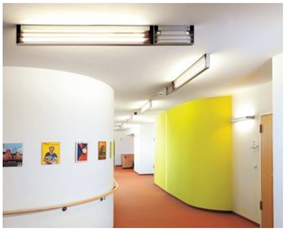 [92] [92] 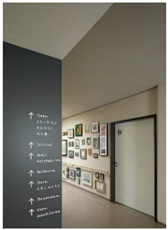 [93] [93] | |||||||
| ◯ |
| ||||||
| ◯ | ◯ |
| |||||
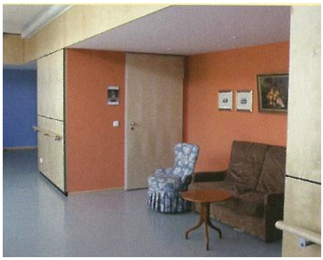 [94] [94]  [95] [95] 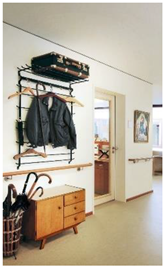 [96] [96] 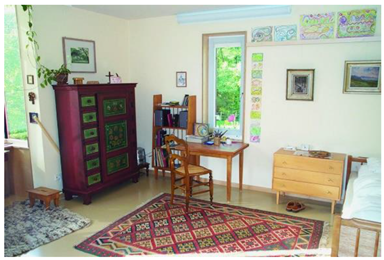 [94] [94] | |||||||
| ◯ | ◯ |
| |||||
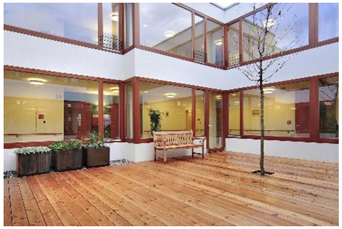 [96] [96] 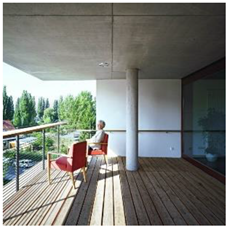 [97] [97] | |||||||
| ◯ |
| ||||||
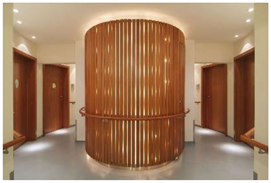 [98] [98] 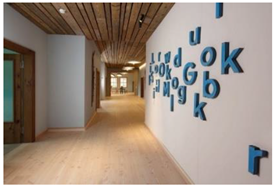 [99] [99] | |||||||
| (2) Facility sizes | ◯ | ◯ | ◯ | ◯ |
| ||
| ◯ | ◯ | ◯ |
| ||||
| ◯ | ◯ | ◯ | ◯ |
| |||
| ◯ | ◯ | ◯ | ◯ |
| |||
| ◯ | ◯ | ◯ |
| ||||
| ◯ | ◯ | ◯ | ◯ |
| |||
| (3) Necessary rooms | ◯ |
| |||||
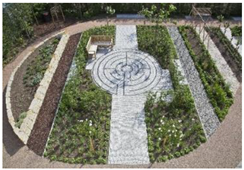 [96] [96] 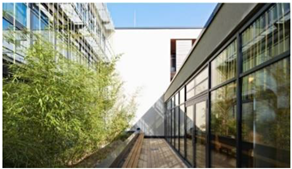 [100] [100] | |||||||
| ◯ | ◯ | ◯ |
| ||||
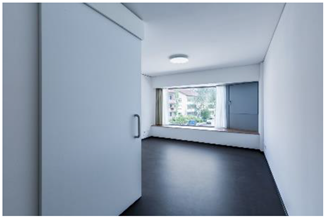 [91] [91]  [94] [94] | |||||||
| |||||||
| (4) Detailed regulations of necessary rooms | ◯ | ◯ | ◯ | Bedrooms |
| ||
| ◯ | ◯ | ◯ | ◯ | Common living room |
| ||
| ◯ | ◯ | Kitchen and dining room |
| ||||
| ◯ | ◯ | ◯ | Outdoor spaces |
| |||
| ◯ | Physical occupational therapy room |
| |||||
| ◯ | ◯ | ◯ | Ensuite bathrooms |
| |||
| ◯ | Common toilets |
| |||||
| ◯ | ◯ | Common bathrooms |
| ||||
Disclaimer/Publisher’s Note: The statements, opinions and data contained in all publications are solely those of the individual author(s) and contributor(s) and not of MDPI and/or the editor(s). MDPI and/or the editor(s) disclaim responsibility for any injury to people or property resulting from any ideas, methods, instructions or products referred to in the content. |
© 2024 by the author. Licensee MDPI, Basel, Switzerland. This article is an open access article distributed under the terms and conditions of the Creative Commons Attribution (CC BY) license (https://creativecommons.org/licenses/by/4.0/).
Share and Cite
Jee, S.I. Enhancing Dementia Nursing Homes in South Korea: Lessons from German Building Standards. Buildings 2024, 14, 1427. https://doi.org/10.3390/buildings14051427
Jee SI. Enhancing Dementia Nursing Homes in South Korea: Lessons from German Building Standards. Buildings. 2024; 14(5):1427. https://doi.org/10.3390/buildings14051427
Chicago/Turabian StyleJee, Soo In. 2024. "Enhancing Dementia Nursing Homes in South Korea: Lessons from German Building Standards" Buildings 14, no. 5: 1427. https://doi.org/10.3390/buildings14051427
APA StyleJee, S. I. (2024). Enhancing Dementia Nursing Homes in South Korea: Lessons from German Building Standards. Buildings, 14(5), 1427. https://doi.org/10.3390/buildings14051427





